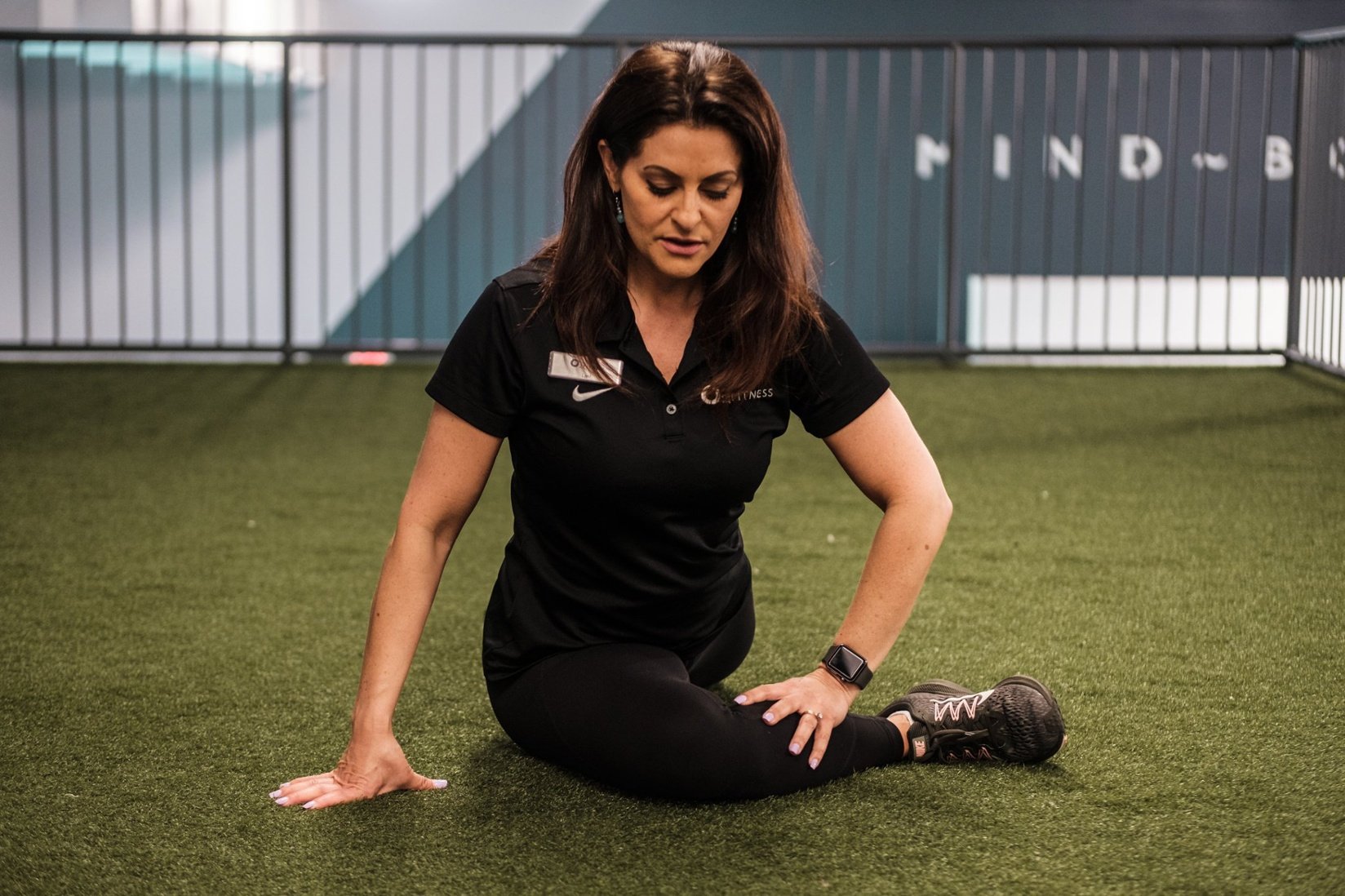Personal Trainer PAR-Q Form Template (PDF, DOC, XLS – FREE)
Use the free personal trainer PAR-Q form template in PDF, DOC, and XLS and modify as needed for your personal training business.

This free personal training PAR-Q template form download options is an essential tool for personal trainers to ensure the safety and readiness of their clients for physical activity. The personal trainer Physical Activity Readiness Questionnaire (PAR-Q) covers key health questions, allowing trainers to tailor their fitness programs appropriately while considering any potential risks. Be sure to also check out our Gym PAR-Q Form Template, Gym Contract Template, Personal Training Contract Template, Personal Training Client Intake Form Template, and other free fitness templates at the download link below.
A PAR-Q form (Physical Activity Readiness Questionnaire) is an essential document for personal trainers and fitness professionals to assess a client’s readiness for physical activity. It helps identify any potential health risks that could arise from exercise, ensuring a safe and effective training experience. While traditional PAR-Q form PDFs and printable PAR-Q forms serve the purpose, Exercise.com offers the best solution for integrating and automating these forms with your overall top-rated best personal training software and best gym management software all in one. With Exercise.com, trainers can digitize their client onboarding, making online PAR-Q forms a seamless part of the consultation process.
For those who want to start a personal training business, or learn how to become a personal trainer, or maybe even start an online personal training business, or maybe even open a gym, and are looking looking for a quick start, PAR-Q form templates are available, including PAR-Q form template Word documents, PAR-Q questionnaire PDFs, and PT PAR-Q form downloads. These resources provide a convenient way for trainers to implement initial client screening. However, Exercise.com’s platform takes it further by allowing you to create a free online PAR-Q form for personal training, making it easier for clients to complete and submit forms before their sessions. This streamlines the intake process and keeps all records organized and accessible.

Personal trainers can use personal trainer PAR-Q templates free or personal training PAR-Q form templates to gather important information from clients, such as medical history and current physical condition. These PAR-Q forms for personal training help trainers customize workout plans based on a client’s responses, ensuring safety and effectiveness. Additionally, PAR-Q form for trainers templates and PAR-Q form examples can guide trainers on what to include in their assessments.
Integrating PAR-Q form PDFs or PAR-Q screening forms into your digital management system via Exercise.com makes it easier to track and store completed forms. The software also supports personal trainer forms free download options and personal training consultation form templates for a comprehensive onboarding experience. The PAR-Q form PDF and PAR-Q questionnaire template can be part of your online workflow, so clients fill out forms digitally, reducing the need for paper and making the process faster and more efficient.
Understanding what is a PAR-Q form and its importance is crucial for any fitness professional. It serves as the foundation for a safe training program, assessing risk factors that may affect a client’s ability to participate in certain types of exercise. Exercise.com’s digital solutions not only include PAR-Q fitness forms and PAR-Q form questions but also integrate them with other client management tools, making it the ultimate platform for running a personal training business.

And, of course, managing your fitness business online with the best gym management software and the best personal training software means that you can easily learn how to sell personal training online and create fitness session plans, waivers, forms, fitness assessments, lead forms, registration forms, online booking, workout plans, and much more.
To send out personal trainer sign up forms, lead forms, fitness class registration forms, waivers, invoices, fitness assessments, email and SMS automations, and much more (including coupon codes, gift vouchers, you name it), then be sure to check out the best gym software and the best personal trainer software: Exercise.com.

Be sure to use the best fitness assessment software for gyms to make this even easier.
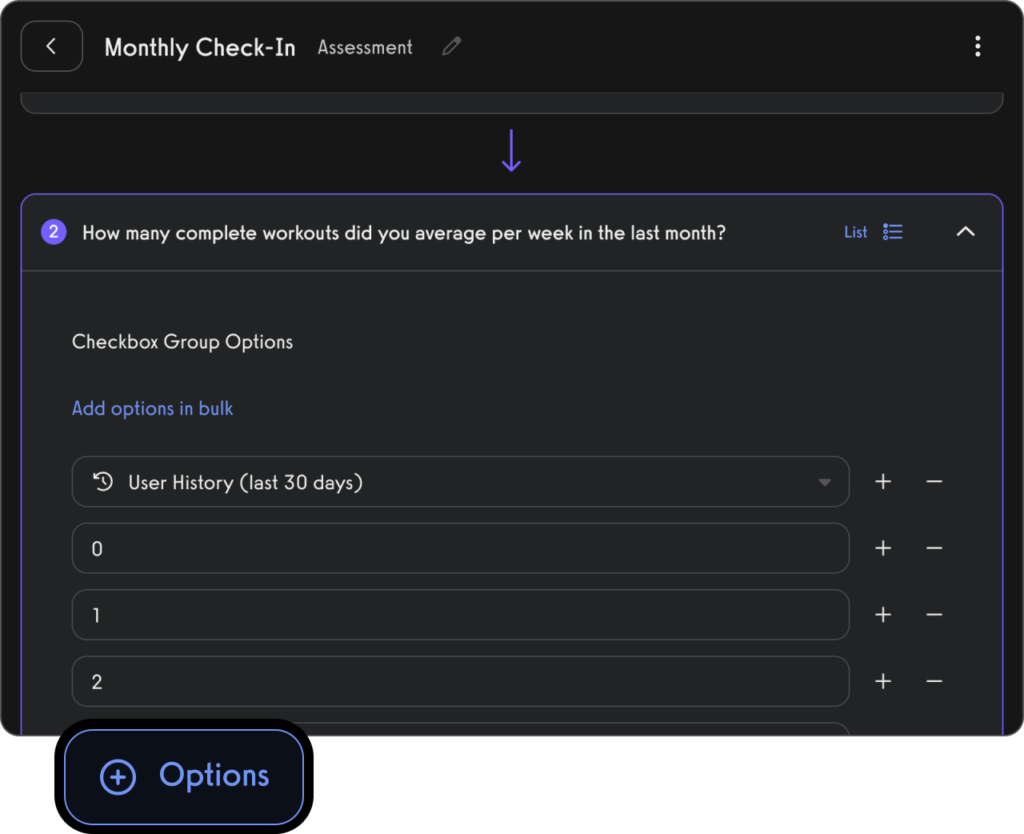
Automate your gym PAR-Q forms so that they are sent out automatically based on triggers you specify: gym check-ins, new gym member sign-ups, new classes booked, etc.
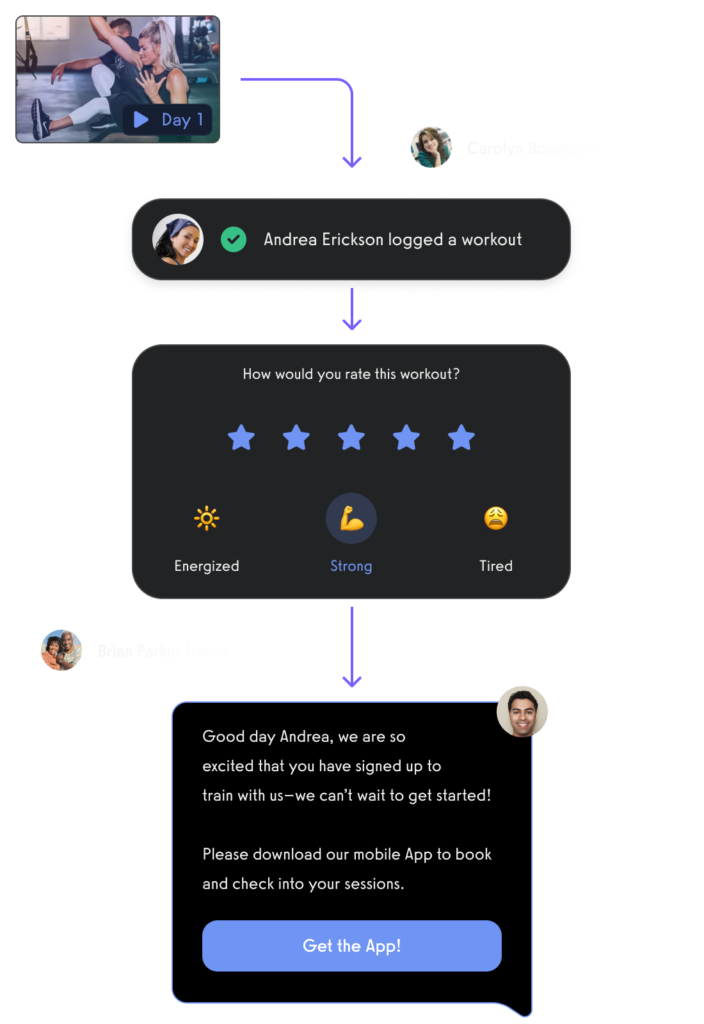
Incorporate assessments seamlessly into your booking flow.

Requires waivers, invoices, and e-signatures.
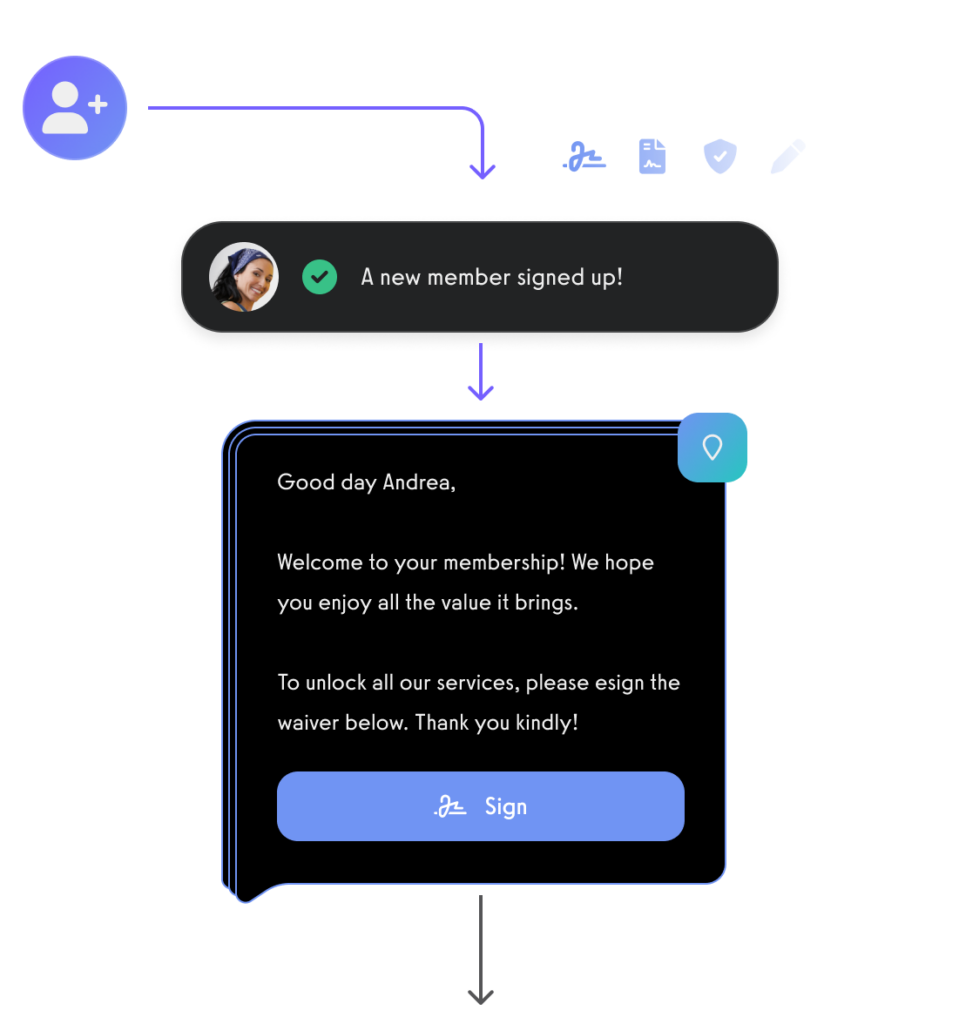
Use the Exercise.com workout plan creator to create your workout plans and fitness assessments like the personal trainer PAR-Q form.

Run fitness challenges, create online workout groups, do distance training, and of course, deliver fitness assessments and workouts, all right within the Exercise.com platform (custom branded to your brand).

All from your own custom branded gym apps.

Whether you need a free fitness assessment template or a free gym health questionnaire template then we’ve got you covered with the best gym software and the best personal trainer software: Exercise.com.
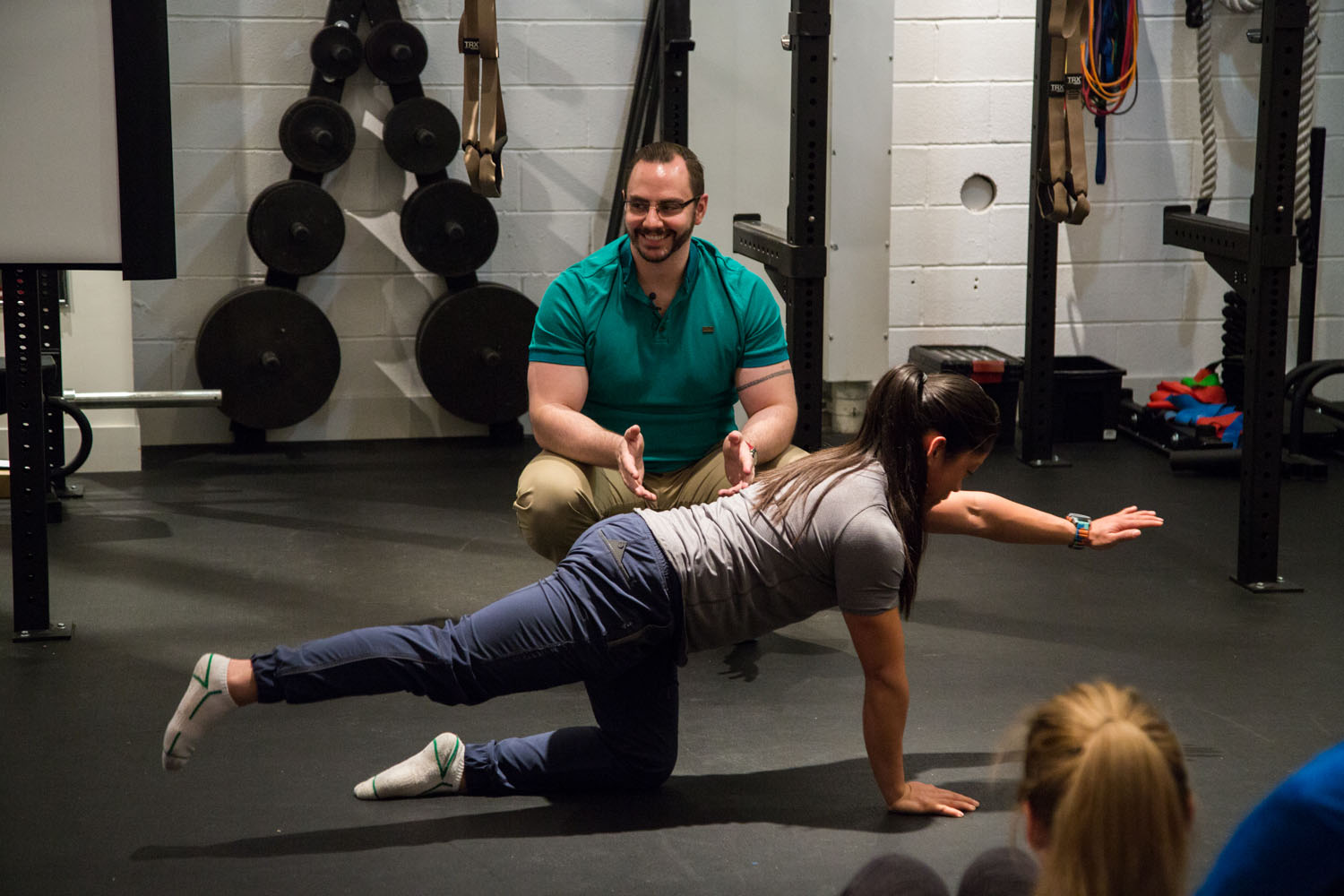
Personal Trainer PAR-Q (Physical Activity Readiness Questionnaire) Form Template
Personal Information
- Full Name: ________________________
- Date of Birth (DD/MM/YYYY): ____________
- Gender: ____________
- Contact Number: ________________________
- Email Address: ____________________________________
Emergency Contact Information
- Emergency Contact Name: ________________________
- Relationship to Client: ________________________
- Emergency Contact Number: ________________________
Medical History
- Do you have a heart condition?
- [ ] Yes
- [ ] No
- Do you feel pain in your chest when you perform physical activity?
- [ ] Yes
- [ ] No
- In the past month, have you had chest pain when you were not performing any physical activity?
- [ ] Yes
- [ ] No
- Do you lose your balance because of dizziness, or do you ever lose consciousness?
- [ ] Yes
- [ ] No
- Do you have a bone or joint problem that could be worsened by a change in your physical activity?
- [ ] Yes
- [ ] No
- Is your doctor currently prescribing any medication for your blood pressure or a heart condition?
- [ ] Yes
- [ ] No
- Do you know of any other reason why you should not engage in physical activity?
- [ ] Yes
- [ ] No
- If you answered ‘Yes’ to any of the above questions, please provide details:
_____________________________________________________________________________________________________
_____________________________________________________________________________________________________
_____________________________________________________________________________________________________
Lifestyle and Physical Activity Readiness
- How would you rate your current physical activity level?
- [ ] Sedentary
- [ ] Moderately Active
- [ ] Active
- [ ] Very Active
- What are your fitness goals? (e.g., weight loss, muscle gain, endurance improvement)
- Have you engaged in regular exercise in the last 6 months?
- [ ] Yes
- [ ] No
- Please list any physical activities or sports you regularly participate in:
- Are there any specific exercises or activities you are unable to perform?
- [ ] Yes
- [ ] No
- If yes, please explain:
_____________________________________________________________________________________________________
_____________________________________________________________________________________________________
_____________________________________________________________________________________________________
Acknowledgment and Consent
- I acknowledge that the information provided above is accurate to the best of my knowledge and I consent to engage in a physical activity program. I understand that it is my responsibility to inform my personal trainer of any conditions or changes in my health, now and ongoing, which might affect my ability to exercise safely and with minimal risk of injury.
Client Signature: ________________________ Date: _____________
Trainer Signature: _______________________ Date: _____________
Note to Trainer: Assess the information provided and discuss any concerns or precautions with the client before commencing any physical activity program. In cases where medical conditions are present, it may be advisable to seek clearance from a healthcare professional.
Ready to automate your personal training business and send personal trainer PAR-Q forms electronically with online fitness assessments?

The Importance of a PAR-Q Form for Personal Trainers
In the world of personal training, ensuring the safety and well-being of our clients is of utmost importance. One tool that plays a crucial role in this regard is the Physical Activity Readiness Questionnaire, more commonly known as the PAR-Q form. This article will dive deep into the realm of PAR-Q forms, examining their significance, purpose, benefits, and how personal trainers can effectively integrate them into their practice. Ensure the safety and well-being of your clients with our Personal Trainer PAR-Q Form Template.
As a personal trainer, your clients’ health and safety are your top priorities. The PAR-Q form serves as a vital tool to assess clients’ readiness for physical activity and identify any potential risks or limitations. By gathering essential information through this form, you can customize your training programs to ensure they are safe, effective, and tailored to each individual’s needs. It also plays a critical role in minimizing liability and legal risks, as you can demonstrate that you have taken necessary precautions to protect your clients.
Furthermore, the PAR-Q form allows personal trainers to track clients’ progress and make necessary adjustments to their training programs. By regularly reviewing the information provided in the form, trainers can monitor changes in clients’ health status, identify any new risks or limitations, and modify exercises or intensity levels accordingly. This ongoing assessment ensures that clients continue to train in a safe and appropriate manner, maximizing their results while minimizing the risk of injury.
Read More:
- Gym PAR-Q Form Template
- How to Make Money Selling Workout Plans Online
- How do you make a workout program and sell it?
- Best Workout Plan Sales Software
Understanding the Purpose of the PAR-Q Form
The primary purpose of the PAR-Q form is to assess an individual’s readiness for physical activity or exercise. It aims to identify any signs or symptoms that may indicate potential health risks, such as cardiovascular problems, musculoskeletal issues, or chronic conditions. By asking pertinent questions about medical history, current health status, and previous injuries, the PAR-Q form helps personal trainers gauge whether it is safe for a client to engage in specific exercises or if they require further medical clearance.
Moreover, the PAR-Q form allows personal trainers to understand clients’ goals, expectations, and preferences, helping them create tailored training plans. By considering factors like age, fitness level, and specific health concerns, trainers can modify exercises, adjust intensity, and provide appropriate alternatives to ensure a safe and effective workout experience for their clients.
In addition to assessing an individual’s readiness for physical activity, the PAR-Q form also serves as a communication tool between personal trainers and their clients. It allows trainers to gather important information about clients’ exercise history, including any previous training programs, sports participation, or specific activities they have engaged in. This information helps trainers understand clients’ past experiences and can guide them in designing a program that builds upon their existing knowledge and skills.
Furthermore, the PAR-Q form plays a crucial role in establishing a baseline for monitoring progress and evaluating the effectiveness of a training program. By documenting clients’ initial health status, fitness level, and any limitations or concerns, trainers can track changes over time and make necessary adjustments to ensure continuous improvement. Regular reassessment using the PAR-Q form allows trainers to identify any new health issues or changes in clients’ circumstances that may require modifications to their exercise routine.
The Benefits of Using a PAR-Q Form Template
Using a PAR-Q form template offers several advantages to both personal trainers and their clients. Firstly, it saves time. The template provides a standardized and organized set of questions, eliminating the need for trainers to create the form from scratch for each new client. This ensures a consistent and efficient screening process, allowing trainers to focus more on their clients’ training needs and goals.
Secondly, PAR-Q form templates improve professionalism. By utilizing a well-designed template, trainers demonstrate their commitment to client safety and adhere to industry standards. This not only enhances their reputation but also fosters client trust and confidence in their expertise.
Finally, PAR-Q form templates facilitate data management. With a structured template, trainers can easily record and store client information for future reference. This proves invaluable when revisiting past client assessments or if a situation arises that requires accessing historical data. Additionally, it enables trainers to analyze trends or patterns in client responses, helping them fine-tune their training approaches and evaluate the effectiveness of their programs over time.
Another benefit of using a PAR-Q form template is that it promotes consistency in the screening process. The template ensures that all clients are asked the same set of questions, reducing the risk of overlooking important information. This consistency allows trainers to make more accurate assessments and develop appropriate training plans tailored to each client’s needs.
In addition, PAR-Q form templates can help trainers identify potential risks or contraindications before starting a training program. The standardized questions cover various health conditions and symptoms, enabling trainers to identify any red flags that may require further medical evaluation or modifications to the training plan. This proactive approach to client safety can prevent injuries and ensure that clients receive appropriate care and guidance throughout their fitness journey.
How to Create an Effective Personal Trainer PAR-Q Form
Creating an effective PAR-Q form requires careful consideration of various factors. First and foremost, the form should include clear and concise questions that cover essential aspects of a client’s health and fitness history. The questions should be comprehensive but not overly burdensome, striking a balance that encourages clients to provide accurate and complete information without feeling overwhelmed.
Furthermore, it is essential to organize the PAR-Q form in a logical sequence, starting with general background information and gradually progressing towards more specific inquiries. This sequential structure not only makes it easier for clients to understand and respond but also helps trainers identify any potential red flags or areas requiring further clarification.
Incorporating open-ended questions into the form can be beneficial as well. This allows clients to elaborate on specific health conditions, previous injuries, or concerns they might have, enabling trainers to gain a more comprehensive understanding of their clients’ needs and concerns.
Lastly, creating space for clients to provide any additional comments or information can be valuable. This allows them to disclose any relevant factors that may not be covered by the standard questions in the form, providing personal trainers with invaluable insights to tailor their programs and address each client’s unique circumstances.
Additionally, it is important to regularly review and update the PAR-Q form to ensure its effectiveness. As new research and guidelines emerge, personal trainers should stay informed and make necessary adjustments to the form to reflect the latest recommendations. This ongoing evaluation and refinement process will help maintain the form’s relevance and accuracy, ultimately enhancing the quality of the information gathered and the safety of the training programs.
Key Sections to Include in Your PAR-Q Form Template
A well-designed PAR-Q form template should consist of several key sections to ensure a comprehensive assessment of a client’s readiness for physical activity. These sections typically include:
- Personal Information: This section collects basic details such as name, age, contact information, and emergency contact details. It helps trainers easily identify and communicate with their clients, as well as ensure they have necessary emergency contact information readily available.
- Medical History: This section explores the client’s past and current medical conditions, chronic illnesses, surgeries, or hospitalizations. By understanding their medical history, trainers can tailor workouts to accommodate any restrictions or precautions required.
- Current Medications: Here, clients can provide details about any prescription or over-the-counter medication they are currently taking. This information is crucial as certain medications may have implications for exercise or may require adjustments to training intensity or program design.
- Family Medical History: This section delves into any family history of cardiovascular diseases, diabetes, high blood pressure, or other hereditary conditions. This information helps trainers assess potential genetic predispositions or risks that may impact training recommendations.
- Physical Activity Habits: Understanding a client’s current physical activity level and exercise habits allows trainers to gauge their fitness baseline and customize training programs accordingly. This section covers daily activity levels, exercise preferences, and any existing workout routines.
- Symptoms and Limitations: This section focuses on any symptoms or limitations clients may experience during exercise. By identifying factors like shortness of breath, dizziness, or joint pain, trainers can modify workouts to ensure safety and avoid exacerbating any existing conditions.
- Informed Consent: This section requires clients to give their consent to engage in physical activity and acknowledges their understanding of the potential risks associated with exercise. It is vital for trainers to document this consent to demonstrate that clients have been made aware of the risks and have willingly assumed them.
Additionally, it is important to include a section for the client to provide information about their goals and expectations. This section allows trainers to understand what the client hopes to achieve through their physical activity program, whether it be weight loss, improved strength, increased flexibility, or overall better health. By knowing the client’s goals, trainers can tailor their training programs to align with these objectives and help clients stay motivated throughout their fitness journey.

Can I make my own PAR-Q form?
Yes, you can create your own Physical Activity Readiness Questionnaire (PAR-Q) form, but it should align with standard guidelines and include all necessary health and fitness-related questions to assess a person’s readiness for physical activity.
What should be included in a PAR-Q form?
A PAR-Q form should include questions about an individual’s medical history, current health status, any symptoms or conditions that could affect their ability to exercise safely, and questions about their lifestyle and fitness goals.
What is the PAR-Q assessment for personal training?
The PAR-Q assessment for personal training is a standardized tool used to identify any potential risks associated with beginning a new exercise program. It helps trainers understand any limitations or necessary precautions for their clients.
What is the 7 physical activity readiness questionnaire?
The “7” in the PAR-Q refers to the original seven questions that were designed to quickly assess an individual’s readiness for physical activity. These questions are centered around identifying potential health risks.
Who should complete a PAR-Q?
Anyone planning to start a new exercise program, especially those who are new to physical activity, have been inactive, or have health concerns, should complete a PAR-Q.
When should a PAR-Q be completed?
A PAR-Q should be completed before an individual begins a new exercise program or significantly changes their current physical activity levels.
Should a PAR-Q be assessed before beginning an exercise program?
Yes, a PAR-Q should be assessed before beginning an exercise program to ensure the safety and appropriateness of the exercise for the individual.
What are some good physical activities?
Good physical activities can include walking, jogging, cycling, swimming, strength training, yoga, and group fitness classes. The choice depends on individual preferences, goals, and physical condition.
What are the skills-related components of the PAR-Q?
The PAR-Q mainly focuses on health-related components rather than skills. It assesses medical history and symptoms that might contraindicate certain types of physical activity.
Why should a personal trainer use a PAR-Q?
A personal trainer should use a PAR-Q to identify any health concerns or limitations of their clients, ensuring that exercise recommendations are safe and appropriate.
What is an assessment with a personal trainer?
An assessment with a personal trainer typically includes evaluating an individual’s fitness level, including strength, flexibility, cardiovascular endurance, and body composition, to create a tailored fitness plan.
How do you assess someone for personal training?
To assess someone for personal training, conduct a comprehensive evaluation including a PAR-Q, fitness tests (like strength, endurance, flexibility), and discussions about fitness goals and lifestyle.
What are the 5 physical fitness assessments?
The 5 physical fitness assessments commonly include cardiovascular endurance tests, muscular strength tests, muscular endurance tests, flexibility tests, and body composition analysis.
Who can administer a PAR-Q?
A PAR-Q can be administered by fitness professionals, trainers, or healthcare providers, but it is also designed to be self-administered by the individual.
What is the General Practice Physical Activity Questionnaire (GPPAQ)?
The GPPAQ is a simple, four-level physical activity questionnaire designed for use in primary care to assess adult physical activity levels in the general population.
What are the limitations of the PAR-Q?
Limitations of the PAR-Q include its general nature, which may not capture specific health issues, and its reliance on self-reported information, which can sometimes be inaccurate.
Who can use a GAQ?
A General Activity Questionnaire (GAQ) can be used by healthcare providers or fitness professionals to assess the general physical activity level of an individual.
What is the full form of the PAR-Q?
The full form of PAR-Q is the Physical Activity Readiness Questionnaire.
What is the PAR-Q form for children?
The PAR-Q form for children is a modified version of the standard PAR-Q, designed to assess the readiness of children and adolescents for physical activity, taking into consideration their developmental stage.
How can Exercise.com help me send PAR-Q forms?
Exercise.com can help send PAR-Q forms by providing a digital platform where these forms can be easily distributed, completed, and reviewed online. This streamlines the process, making it more convenient and efficient for both trainers and clients.
